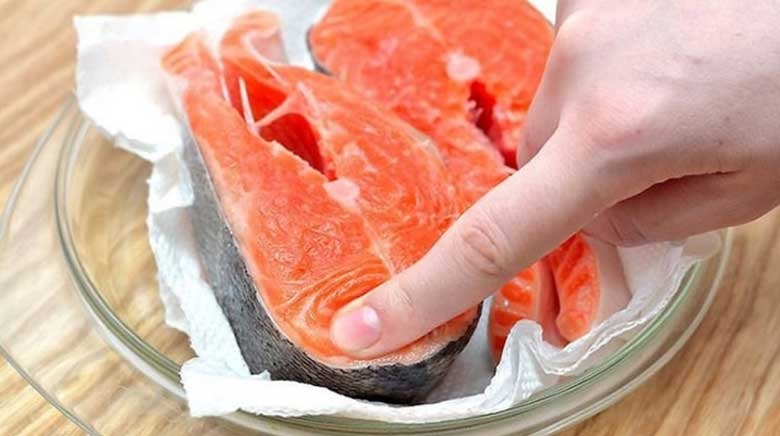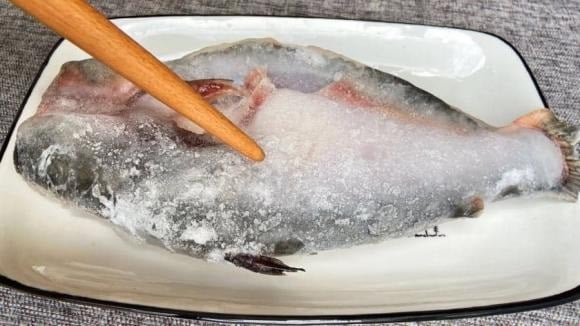Thaw fish with salt and lime
Salt helps firm up the fish, has antibacterial properties and enhances the flavor when cooked.

Lime also helps remove the fishy odor, making the dish even more delicious.
Here’s how to do it: First, put the frozen fish in a container. Then add 1-2 teaspoons of salt, 2 slices of lime. Finally, pour enough water to cover the fish and close the container. Wait for about 5-10 minutes to thaw, then you can immediately cook the fish.
Thaw fish with vinegar
Thawing fish with vinegar is actually quite similar to thawing with lime. However, thawing with vinegar usually takes a little longer.
Here’s how to do it: After rinsing the frozen fish, put it in a container, zip bag, or a large bowl. Fill it with enough water to cover the fish, then add about 50 ml of white vinegar. White vinegar can accelerate the thawing process of frozen fish. However, it takes about 20-25 minutes for the fish to completely thaw.
Thawing food with a microwave
In case you need to thaw quickly, you can use the microwave to heat and thaw the food. Note that when thawing, remove any packaging that is not microwave-safe, such as foam boxes, plastic bags, or cardboard. Place the food in a deep container or plate with a lid or microwave-safe wrap, prevent water from the food from flowing out.

Thawing with a microwave is quite effective because the high-frequency electric field generates internal friction in the food, making it heat up and thaw without damaging the cells.
One thing to note when thawing with a microwave is the time and temperature. If the temperature is too low, the food will thaw slowly, creating conditions for bacteria to grow. If the temperature is too high, the outer layer of the food will be cooked while the inside is still frozen. Therefore, it is important to accurately set the time and quantity of food to choose the appropriate temperature.
With this method, the food must be cooked immediately because the meat may be slightly cooked. In addition to meat, frozen fish can be grilled or roasted in the microwave without the need for thawing.
Discovering Unusual Ways to Utilize Salt
Table salt: a staple for the kitchen table, and a surprisingly powerful and versatile tool for cleaning, preserving and more! From preventing the discoloration of vegetables to repelling termites to deodorizing shoes, the uses of salt extend far beyond the kitchen.






































